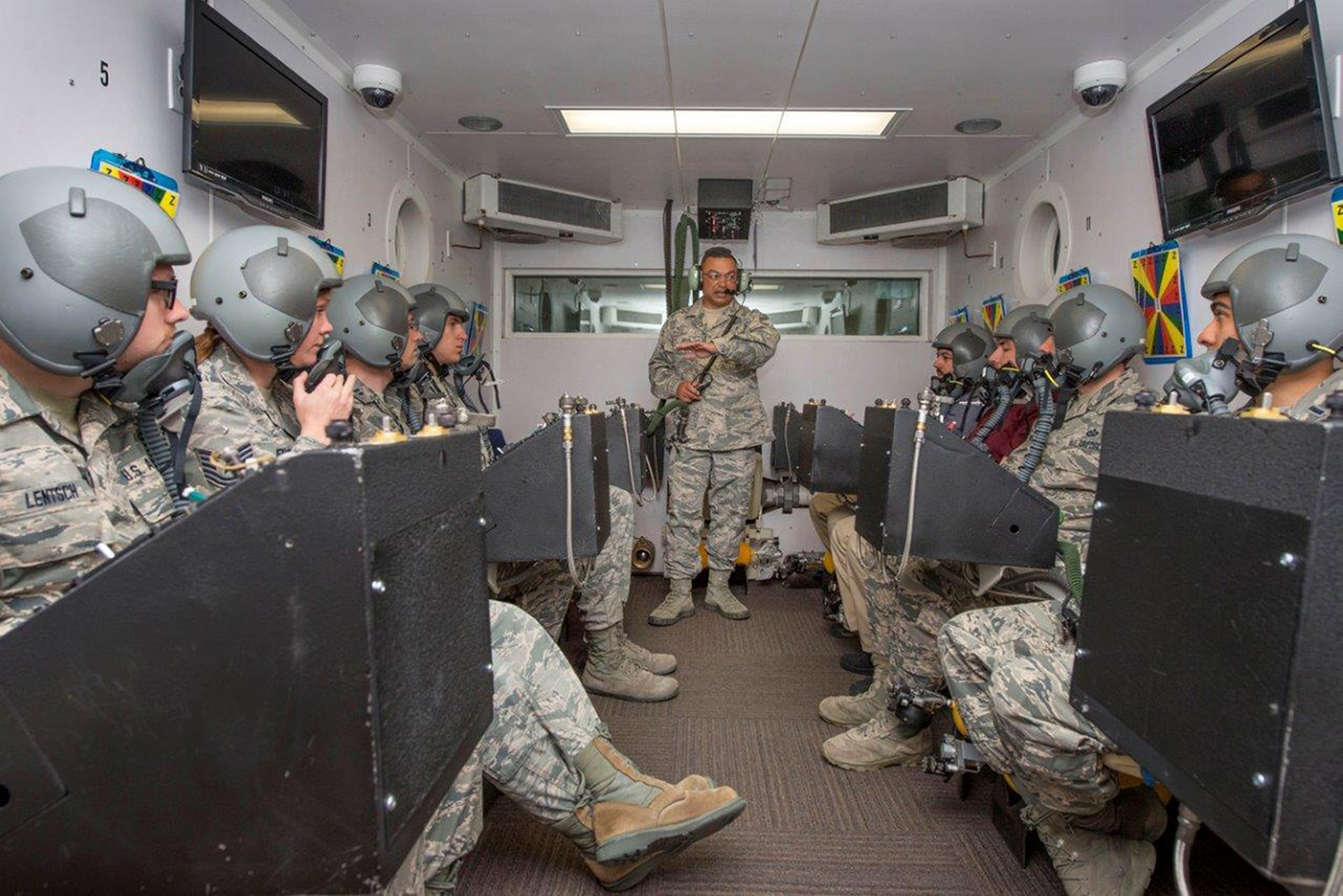“The hypoxic effects began much quicker than I had anticipated and felt very similar to feeling overly intoxicated,” Medina said.
When there is a loss of cabin pressure, aircrew and passengers experience hypoxia – oxygen deprivation – which the most dangerous aspect of flying at altitude, said Senior Master Sgt. Johal Mandeep, USAFSAM Aerospace and Operational Physiology Division superintendent .
The purpose of initial aerospace physiological training is to help aircrew and operational personnel flying in aircraft understand the hazards of high altitude flight and the physiological effects of low barometric pressure.
Wright Patterson marks 100 years of aviation achievement
“When we put students in the chamber they’re accompanied by two to three chamber technicians as safety observers; we are all trained to treat any issues that could occur during the flight,” Mandeep said.
As the barometric pressure drops , instructors give students a few puzzles, short-answer questions and simple math problems to solve.”
“I was able to do the first three tasks fairly quickly, but then quickly became very dizzy” Medina said. “I tried to work through it, but the simple math problems were increasingly difficult, due to the onset of mental confusion.”
He tried to compensate.
“I skipped around on the page to accomplish other questions/puzzles that were easier to comprehend but then felt very hot and decided to call it quits.” Medina said. “I don’t think I made it past 60 seconds.”
Every year USAFSAM train s about 1,300 students in the two-day, Air Force-required training, which includes academics and a chamber flight.
“I believe the most valuable experience about the training is to give our students basic information on the hazards of low barometric pressure in-flight and to be able to physically experience the effects of hypoxia so they can identify it and treat if it occurs in-flight,” Mandeep said.
About the Author
